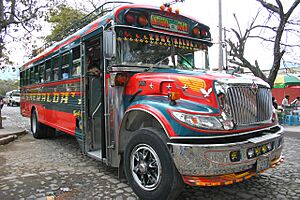Mountain paca facts for kids
Quick facts for kids Mountain paca |
|
|---|---|
 |
|
| Conservation status | |
| Scientific classification | |
| Synonyms | |
|
Agouti taczanowskii |
The mountain paca (Cuniculus taczanowskii) is a fascinating animal that lives in the high mountains of South America. It's a type of rodent, like a giant guinea pig, and it makes its home in burrows underground. These pacas are mostly active at night, and they prefer to live alone. They are quite territorial, meaning they like to have their own space. Mountain pacas mainly eat fruits and seeds they find in the forest. You can find them in the higher Andean mountain forests of countries like Venezuela, Colombia, Ecuador, Peru, and Bolivia.
What Does a Mountain Paca Look Like?
This paca has thick, coarse fur. It doesn't have a soft undercoat. Its fur is usually dark brown or black on its back and sides. Its belly is white or yellowish. A cool feature is the three to five rows of white spots along its sides, which stand out against its dark fur.
Mountain pacas have strong, thick legs. Their front feet have four toes, and their back feet have five. The first and fifth toes on their back feet are very small. Their nails are strong and work almost like hooves! They also have a short tail with no hair. A unique part of their head is a special bone structure called the zygomatic arch. This part is very wide and helps them make sounds. It acts like a sound box, which is super rare for a mammal!
Life and Habits
Mountain pacas are shy creatures. They spend their days resting in their burrows. At night, they come out to search for food. They love to eat different kinds of fruits and seeds that fall from trees. Because they are solitary, you usually only see one paca at a time.
Why Are Mountain Pacas Important?
People in some rural areas hunt mountain pacas for their meat. The meat is considered a good source of food. Because they grow quickly, some people have tried to raise them on farms. However, mountain pacas don't have many babies at once. Their numbers have gone down a lot recently. This is because of hunting and also because their forest homes are being destroyed. Luckily, they are doing much better in protected areas, like national parks. These areas help keep them safe and allow their populations to grow.


